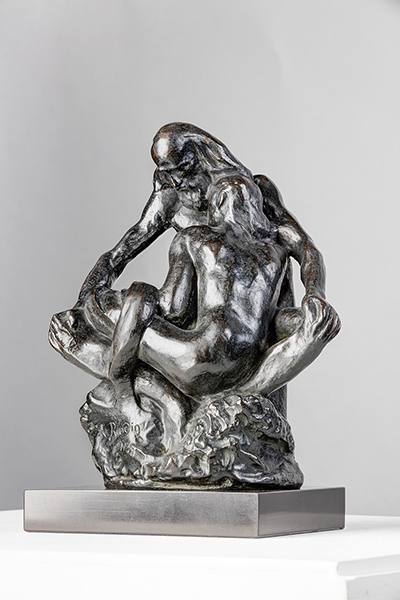Auguste Rodin created the design for Glaucus in 1886 from plaster but the bronze casts did not appear until several years later. The theme concerns the son of Poseidon and the sculptor would incorporate mythological content from time to time within his work.
The two bronze versions that we are aware of can be found within the prestigious collections of the Brooklyn Museum and the Museo Soumaya in Mexico. The latter actually own the largest private array of Rodin's work, as part of a highly impressive selection of European art that sits alongside some of the greatest names in Mexican art as well. Rodin himself would often produce titles many years after the piece itself had been completed, or even change it many times. He would often fit the title to whatever he saw in the final sculpture, rather than designing something with a specific theme in mind in the first place. He felt this method avoided restricting the creative process, but it would be wrong to assume that he necessarily planned this piece to be a portrait of Glaucus before he had even started it, as this would rarely have been the case.
The sculptor produced a number of study pieces based on Ovid's Metamorphoses, and so the mythological connection within this piece was perhaps a little more than just an after thought in this case. He is concerned her with the myth around Glaucus and Scylla, though his interpretation is believed to have captured the former as turning into a tree, so according to a number of experts of this artist. He would go on to produce a number of related sculptures, as if spin-offs from the literature source as he continued to experiment with different ideas and versions of the content that he had read earlier.
Those who find themselves in Mexico City should certainly take the opportunity to visit the Museo Soumaya which hosts a highly impressive selection of work which can compete with any gallery or museum in the world. The architecture in which it is housed is also highly spectacular and worth a visit on its own. Besides the large selection of moulds and sculptures from Rodin's career, which is only surpassed by the Musee Rodin, you will also find a number of other important European artists represented here including the likes of Salvador Dalí, Bartolomé Esteban Murillo and Tintoretto. They have therefore covered quite a wide range in art movements and periods, dating back to the Italian Renaissance, leading all the way up to 20th century modern art. They continue to grow this collection over time and add new acquisitions on an annual basis.




